National Native American Heritage Month, November 2021
Departmental News
Posted: Oct 29, 2021 - 12:00pm
The UNM Department of Anthropology celebrates National Native American Heritage Month, November 2021. Click on the red links below for more information. Scroll down to read about Native American Heritage Month history, Native American scholars, events, research, news and Native American organizations.
About National Native American Heritage Month
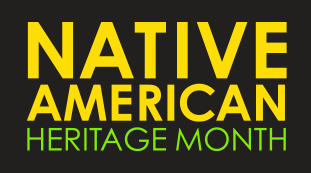 "One of the very [first] proponents of an American Indian Day was Dr. Arthur C. Parker, a Seneca Indian, who was the director of the Museum of Arts and Science in Rochester, N.Y. He persuaded the Boy Scouts of America to set aside a day for the “First Americans” and for three years they adopted such a day. In 1915, the annual Congress of the American Indian Association...directed its president, Rev. Sherman Coolidge, an Arapahoe, to ...[declare] the second Saturday of each May as an American Indian Day and contained the first formal appeal for recognition of Indians as citizens. ...The first American Indian Day in a state was declared on the second Saturday in May 1916 by the governor of New York. Several states celebrate the fourth Friday in September....In 1990 President George H. W. Bush approved a joint resolution designating November 1990 “National American Indian Heritage Month.” Similar proclamations, under variants on the name (including “Native American Heritage Month” and “National American Indian and Alaska Native Heritage Month”) have been issued each year since 1994." Read more
"One of the very [first] proponents of an American Indian Day was Dr. Arthur C. Parker, a Seneca Indian, who was the director of the Museum of Arts and Science in Rochester, N.Y. He persuaded the Boy Scouts of America to set aside a day for the “First Americans” and for three years they adopted such a day. In 1915, the annual Congress of the American Indian Association...directed its president, Rev. Sherman Coolidge, an Arapahoe, to ...[declare] the second Saturday of each May as an American Indian Day and contained the first formal appeal for recognition of Indians as citizens. ...The first American Indian Day in a state was declared on the second Saturday in May 1916 by the governor of New York. Several states celebrate the fourth Friday in September....In 1990 President George H. W. Bush approved a joint resolution designating November 1990 “National American Indian Heritage Month.” Similar proclamations, under variants on the name (including “Native American Heritage Month” and “National American Indian and Alaska Native Heritage Month”) have been issued each year since 1994." Read more
Visit the National Native American Heritage page to learn more about Exhibits and Collections in the Library of Congress
The National Congress of American Indians (NCAI) Celebrates Native American Heritage Month
"The month is a time to celebrate rich and diverse cultures, traditions, and histories and to acknowledge the important contributions of Native people. Heritage Month is also an opportune time to educate the general public about tribes, to raise a general awareness about the unique challenges Native people have faced both historically and in the present, and the ways in which tribal citizens have worked to conquer these challenges."
Visit their website to learn about partnerships and initiatives, campaigns and the NCAI policy center
The National Parks Service Celebrates National Native American Heritage Month
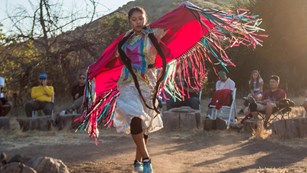 "America is a vast land of many cultures dating back thousands of years to the original inhabitants of the land. History, heritage, or culture of Native Americans, Alaska Natives, and Native Hawaiians are part of every national park and communities across the country today. Every November during Native American Heritage Month and throughout the year, the National Park Service and our partners share history and the continuing culture of America's indigenous peoples."
"America is a vast land of many cultures dating back thousands of years to the original inhabitants of the land. History, heritage, or culture of Native Americans, Alaska Natives, and Native Hawaiians are part of every national park and communities across the country today. Every November during Native American Heritage Month and throughout the year, the National Park Service and our partners share history and the continuing culture of America's indigenous peoples."
Learn more on the National Parks Service website
National Geographic Honors Native American Heritage Month
"The United States celebrates Native American Heritage Month in November during which National Geographic acknowledges the Indigenous peoples of the Americas. This collection celebrates the history, accomplishments, culture, and lives of American Indians. In so doing, we acknowledge the systemic discrimination these communities face in our nation and our collective efforts aim to advance a more diverse, inclusive, and equitable future."
Learn more about the Indian Removal Act and more on the NGS Website
The Public Broadcasting System (PBS) Celebrates National Native American Heritage Month
 "Native American Heritage Month has evolved from its beginnings as a week-long celebration in 1986, when President Reagan proclaimed the week of November 23-30, 1986 as "American Indian Week." Every President since 1995 has issued annual proclamations designating the month of November as the time to celebrate the culture, accomplishments, and contributions of people who were the first inhabitants of the United States. Through dance, family traditions, and music, these stories show the diversity and long history of Indigenous people across the United States. Celebrate the history, culture, and traditions of American Indians and Alaska Natives in a special collection of films, short stories, and resources from Public Television." PBS offers free documentaries online such as: Standing Bear's Footsteps: The story of an Indian chief who redefined what it means to be an American; Unspoken: America's Native American Boarding Schools; Urban Rez: How do Native Americans maintain their culture in a dominant society?; Kind Hearted Woman Part One: An unforgettable portrait of a single mother living on North Dakota's Spirit Lake Reservation; First People - Kumeyaay: Explore the culture of the Kumeyaay Nation; Playing for the World: A unique look at a Native American female basketball team as well as short films, and #NativeInspired recipes from PBS Food Watch now
"Native American Heritage Month has evolved from its beginnings as a week-long celebration in 1986, when President Reagan proclaimed the week of November 23-30, 1986 as "American Indian Week." Every President since 1995 has issued annual proclamations designating the month of November as the time to celebrate the culture, accomplishments, and contributions of people who were the first inhabitants of the United States. Through dance, family traditions, and music, these stories show the diversity and long history of Indigenous people across the United States. Celebrate the history, culture, and traditions of American Indians and Alaska Natives in a special collection of films, short stories, and resources from Public Television." PBS offers free documentaries online such as: Standing Bear's Footsteps: The story of an Indian chief who redefined what it means to be an American; Unspoken: America's Native American Boarding Schools; Urban Rez: How do Native Americans maintain their culture in a dominant society?; Kind Hearted Woman Part One: An unforgettable portrait of a single mother living on North Dakota's Spirit Lake Reservation; First People - Kumeyaay: Explore the culture of the Kumeyaay Nation; Playing for the World: A unique look at a Native American female basketball team as well as short films, and #NativeInspired recipes from PBS Food Watch now
Standing Bear v. Crook (1879)
"In the 1870s and ’80s, Chief Standing Bear’s declaration of his humanity in a powerful courtroom speech established him as one of the nation’s earliest civil rights heroes who is starting to gain visibility in the 21st Century."
Read more about this historic landmark civil rights case on the United States Courts website
Read Native American Contitutions and Legal Materials at the Law Library of Congress Collection
Read about Experiencing War: Stories from the Veterans History Project at the Library of Congress
Tribal Entities in the United States
There are currently 573 Tribal entities recognized and eligible for funding and services from the Bureau of Indian Affairs (BIA) by virtue of their status as Indian Tribes. See the full list
Native American Scholars
 "Hinsha Waste Agli Win - Dr. Beatrice Medicine (1923 - 2005) (Sihasapa and Minneconjou Lakota) was a scholar, anthropologist, and educator known for her work in the fields of Indigenous languages, cultures, and history. Medicine spent much of her life researching, teaching, and serving Native communities, primarily in the fields of bilingual education, addiction and recovery, mental health, tribal identity, and women's, children's, and LGBT community issues." She "...defied stereotypes, racism, and sexism in her life and work while combating the reductive, patronizing views of Native Americans perpetuated by mainstream anthropologists. [Her book] Learning to Be an Anthropologist and Remaining "Native" includes Medicine's clear-eyed views of assimilation, bilingual education, and the adaptive strategies by which Native Americans have conserved and preserved their ancestral languages. Her discussions of sex roles in contemporary Native American societies encompass homosexual orientation among males and females and the "warrior woman" role among Plains Indians as one of several culturally accepted positions according power and prestige to women. The volume also includes Medicine's thoughtful assessments of kinship and family structures, alcoholism and sobriety, the activism implicit in the religious ritual of the Lakota Sioux Sun Dance, and the ceremonial uses of Lakota star quilts. "The Native American is possibly the least understood ethnic minority in contemporary American society," Medicine observed. Her decades of deliberate, generous, dedicated work have done much to reveal the workings of Native culture while illuminating the effects of racism and oppression on Indian families, kinship units, and social and cultural practices." The Smithsonian Institution maintains online digital archive, the "Beatrice Medicine Papers." Learn more
"Hinsha Waste Agli Win - Dr. Beatrice Medicine (1923 - 2005) (Sihasapa and Minneconjou Lakota) was a scholar, anthropologist, and educator known for her work in the fields of Indigenous languages, cultures, and history. Medicine spent much of her life researching, teaching, and serving Native communities, primarily in the fields of bilingual education, addiction and recovery, mental health, tribal identity, and women's, children's, and LGBT community issues." She "...defied stereotypes, racism, and sexism in her life and work while combating the reductive, patronizing views of Native Americans perpetuated by mainstream anthropologists. [Her book] Learning to Be an Anthropologist and Remaining "Native" includes Medicine's clear-eyed views of assimilation, bilingual education, and the adaptive strategies by which Native Americans have conserved and preserved their ancestral languages. Her discussions of sex roles in contemporary Native American societies encompass homosexual orientation among males and females and the "warrior woman" role among Plains Indians as one of several culturally accepted positions according power and prestige to women. The volume also includes Medicine's thoughtful assessments of kinship and family structures, alcoholism and sobriety, the activism implicit in the religious ritual of the Lakota Sioux Sun Dance, and the ceremonial uses of Lakota star quilts. "The Native American is possibly the least understood ethnic minority in contemporary American society," Medicine observed. Her decades of deliberate, generous, dedicated work have done much to reveal the workings of Native culture while illuminating the effects of racism and oppression on Indian families, kinship units, and social and cultural practices." The Smithsonian Institution maintains online digital archive, the "Beatrice Medicine Papers." Learn more
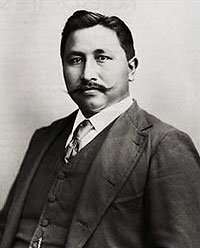 Francis La Flesche (1857-1932) was "the second son of Omaha chief Joseph La Flesche. In 1879 [he] accompanied his sister, Susette, and uncle, Ponca chief Standing Bear, on their grueling Eastern crusade for Indian land reform, and took a job a year later as a copyist for the Bureau of Indian Affairs, working at night to complete two law degrees. He formally transferred to the Bureau of American Ethnology in 1910...During his tenure at the Bureau of American Ethnology he also began his lifelong friendship and collaboration with Alice Fletcher, who became first his employer, then his tutor and colleague, and who eventually adopted him as her son. Between 1880 and 1910 Fletcher and La Flesche collected extensive data on the Omaha people. La Flesche's status on the reservation, his knowledge of the language, and his early participation in tribal rituals proved invaluable in their research. He was strongly committed to preserving every detail of Omaha life because he wanted non-Indians to understand the spiritual nature of Indian culture. ...Fletcher and La Flesche's most fruitful collaboration resulted in the publication of The Omaha Tribe in 1911, the culmination of nearly 30 years of meticulous gathering, sorting, and synthesizing data on the Omaha Indians." Read more
Francis La Flesche (1857-1932) was "the second son of Omaha chief Joseph La Flesche. In 1879 [he] accompanied his sister, Susette, and uncle, Ponca chief Standing Bear, on their grueling Eastern crusade for Indian land reform, and took a job a year later as a copyist for the Bureau of Indian Affairs, working at night to complete two law degrees. He formally transferred to the Bureau of American Ethnology in 1910...During his tenure at the Bureau of American Ethnology he also began his lifelong friendship and collaboration with Alice Fletcher, who became first his employer, then his tutor and colleague, and who eventually adopted him as her son. Between 1880 and 1910 Fletcher and La Flesche collected extensive data on the Omaha people. La Flesche's status on the reservation, his knowledge of the language, and his early participation in tribal rituals proved invaluable in their research. He was strongly committed to preserving every detail of Omaha life because he wanted non-Indians to understand the spiritual nature of Indian culture. ...Fletcher and La Flesche's most fruitful collaboration resulted in the publication of The Omaha Tribe in 1911, the culmination of nearly 30 years of meticulous gathering, sorting, and synthesizing data on the Omaha Indians." Read more
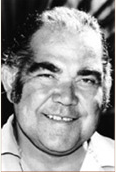 Dr. Alfonso Ortiz (1939-1997) "was a member of the Pueblo of Ohkay Owingeh, Professor of Anthropology at the University of New Mexico and a MacArthur fellow. Born in Espanola to an inter-cultural family, Ortiz graduated from the University of New Mexico with a degree in Anthropology in 1961. He went on to earn a masters degree in 1963 and his PhD in 1967 from the University of Chicago. Ortiz believed that scholarship about American Indian people should not be limited to universities and academics, but that members of Indian communities should undertake it as well." In 2000, the Alfonso Ortiz Center for Intercultural Studies was founded at the University of New Mexico. "The collaborative vein that the Alfonso Ortiz Center promotes is one that shares research and practice to bring about learning and growth in understanding similarities and differences in outlook. Alfonso Ortiz was also responsible for supporting many Indian communities throughout the Southwest and nationally, and in that spirit of his legacy the Alfonso Ortiz Center for Intercultural Studies was created." Visit the Alfonso Ortiz Center for Intercultural Studies to learn more
Dr. Alfonso Ortiz (1939-1997) "was a member of the Pueblo of Ohkay Owingeh, Professor of Anthropology at the University of New Mexico and a MacArthur fellow. Born in Espanola to an inter-cultural family, Ortiz graduated from the University of New Mexico with a degree in Anthropology in 1961. He went on to earn a masters degree in 1963 and his PhD in 1967 from the University of Chicago. Ortiz believed that scholarship about American Indian people should not be limited to universities and academics, but that members of Indian communities should undertake it as well." In 2000, the Alfonso Ortiz Center for Intercultural Studies was founded at the University of New Mexico. "The collaborative vein that the Alfonso Ortiz Center promotes is one that shares research and practice to bring about learning and growth in understanding similarities and differences in outlook. Alfonso Ortiz was also responsible for supporting many Indian communities throughout the Southwest and nationally, and in that spirit of his legacy the Alfonso Ortiz Center for Intercultural Studies was created." Visit the Alfonso Ortiz Center for Intercultural Studies to learn more
"Gladys Tantaquidgeon (1899–2005) brought an Indigenous worldview to her ethnobotanical research among the Delaware, Nanticoke, Cayuga, and Wampanoag tribes of the East Coast. Born to Mohegan parents, Tantaquidgeon trained in Indigenous practices with Mohegan knowledge keepers Emma Baker, Mercy Mathews, and Fidelia Fielding. She published significant works on tribal knowledge and on the use of local natural resources to create traditional herbal medicines." Read more
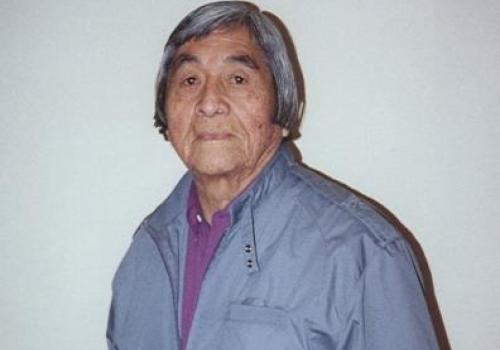 Dr. Emory Sekaquaptewa (1928 - 2007) "was a pioneering champion of preserving his native language. Born at Hotevilla on the Hopi Nation's Third Mesa in 1928, Mr. Sekaquaptewa was believed to be the first native American to attend West Point. He was the first Hopi tribal member to earn a law degree from the University of Arizona, where he became a noted research anthropologist in its Bureau of Applied Research in Anthropology and also taught courses including Hopi Language and Culture during a teaching career that spanned nearly 40 years. ...[He] founded and served as chief judge of the Hopi Appellate Court, where he melded federal and state laws with Hopi traditional rules in judging tribal dispute. But perhaps the achievement that Sekaquaptewa most cherished was his work in compiling and publishing the Hopi Nation's first written dictionary. He completed the research with a grant from the National Endowment for the Humanities and published the "Hopi Dictionary/HopGiikwa LavGaytutuveni: A Hopi-English Dictionary of the Third Mesa Dialect" in 1998, with about 30,000 entries and pronunciation guides." Read more
Dr. Emory Sekaquaptewa (1928 - 2007) "was a pioneering champion of preserving his native language. Born at Hotevilla on the Hopi Nation's Third Mesa in 1928, Mr. Sekaquaptewa was believed to be the first native American to attend West Point. He was the first Hopi tribal member to earn a law degree from the University of Arizona, where he became a noted research anthropologist in its Bureau of Applied Research in Anthropology and also taught courses including Hopi Language and Culture during a teaching career that spanned nearly 40 years. ...[He] founded and served as chief judge of the Hopi Appellate Court, where he melded federal and state laws with Hopi traditional rules in judging tribal dispute. But perhaps the achievement that Sekaquaptewa most cherished was his work in compiling and publishing the Hopi Nation's first written dictionary. He completed the research with a grant from the National Endowment for the Humanities and published the "Hopi Dictionary/HopGiikwa LavGaytutuveni: A Hopi-English Dictionary of the Third Mesa Dialect" in 1998, with about 30,000 entries and pronunciation guides." Read more
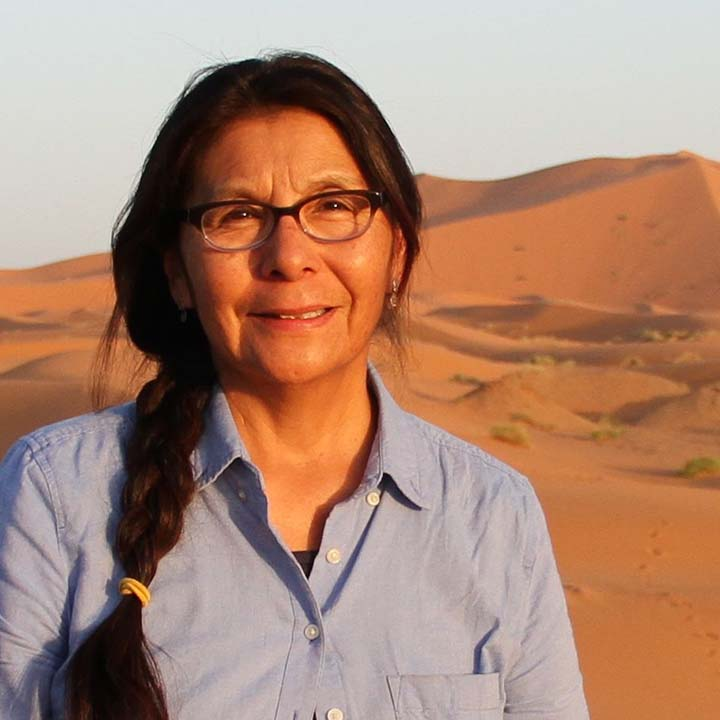 Dr. Beverly Singer was the first Native American woman from Santa Clara Pueblo hired by the UNM Department of Anthropology, holding a joint appointment with the UNM Native American Studies Department. She served as the first Director of Alfonso Ortiz Center for Intercultural Studies. Dr. Singer is a documentary filmmaker whose work examines issues facing indigenous societies. “A sample of her productions include the feature film Who We Are for the National Museum of the American Indian, independent documentary Hozho of Native Women, Native Youth New Mexico for the Museum of Indian Arts and Culture, a National Endowment for the Humanities project Pueblo Women: Journeys and Pathways-Oral Histories of Contemporary Pueblo Women in Service, Leadership and the Arts with the Indian Pueblo Cultural Center, [and] From My Berber Heart featuring Malika Boukbout. Dr. Singer recently filmed and produced Journeys and Pathways: Contemporary Pueblo Women in Leadership, Service, and the Arts Oral History Project in collaboration with the Indian Pueblo Cultural Center and funded by the National Endowment for the Humanities.
Dr. Beverly Singer was the first Native American woman from Santa Clara Pueblo hired by the UNM Department of Anthropology, holding a joint appointment with the UNM Native American Studies Department. She served as the first Director of Alfonso Ortiz Center for Intercultural Studies. Dr. Singer is a documentary filmmaker whose work examines issues facing indigenous societies. “A sample of her productions include the feature film Who We Are for the National Museum of the American Indian, independent documentary Hozho of Native Women, Native Youth New Mexico for the Museum of Indian Arts and Culture, a National Endowment for the Humanities project Pueblo Women: Journeys and Pathways-Oral Histories of Contemporary Pueblo Women in Service, Leadership and the Arts with the Indian Pueblo Cultural Center, [and] From My Berber Heart featuring Malika Boukbout. Dr. Singer recently filmed and produced Journeys and Pathways: Contemporary Pueblo Women in Leadership, Service, and the Arts Oral History Project in collaboration with the Indian Pueblo Cultural Center and funded by the National Endowment for the Humanities.
Read more on Women Make Movies: Profile of Beverly R. Singer
"For many years, Marie Wilcox (1933-2021) was the guardian of the Wukchumni language, one of several Indigenous languages that were once common in Central California but have either disappeared or nearly disappeared. She was the only person for a time who could speak it fluently. She started writing down words in Wukchumni as she remembered them in the late 1990s, scrawling on the backs of envelopes and slips of paper. Then she started typing them into an old boxy computer. Soon she was getting up early to devote her day to gathering words and working into the night. After 20 years of labor, of hunting and pecking on her keyboard, Wilcox, who died at 87 on Sept. 25, produced a dictionary, the first known complete compendium of Wukchumni." Read more and Watch this short documentary about Marie Wilcox
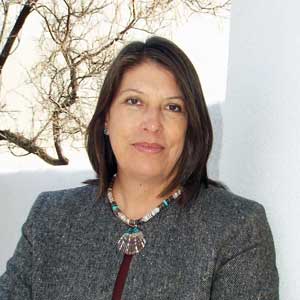 "Dr. Tiffany S. Lee (Diné /Lakota) is Dibé Łizhiní (Blacksheep) and born for Naałaní (Oglala Lakota). She is from Crystal, New Mexico, located on the Navajo Nation, on her mother’s side, and Pine Ridge, South Dakota on her father’s side. Dr. Lee is a Professor and Chair of Native American Studies at the University of New Mexico. She earned her doctorate in Sociology of Education from Stanford University. Her research examines Native youth perspectives with regard to language reclamation and identity. She also investigates socio-culturally centered educational approaches. In 2016, she was awarded a grant from the Spencer Foundation to examine the impact of Indigenous language immersion schools on Native American student achievement."
"Dr. Tiffany S. Lee (Diné /Lakota) is Dibé Łizhiní (Blacksheep) and born for Naałaní (Oglala Lakota). She is from Crystal, New Mexico, located on the Navajo Nation, on her mother’s side, and Pine Ridge, South Dakota on her father’s side. Dr. Lee is a Professor and Chair of Native American Studies at the University of New Mexico. She earned her doctorate in Sociology of Education from Stanford University. Her research examines Native youth perspectives with regard to language reclamation and identity. She also investigates socio-culturally centered educational approaches. In 2016, she was awarded a grant from the Spencer Foundation to examine the impact of Indigenous language immersion schools on Native American student achievement."
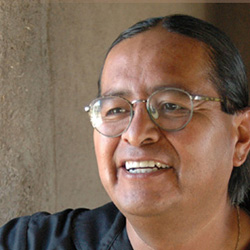 Clarence Cruz, Assistant Professor in the UNM Department of Art, "...is Tewa from Ohkay Owingeh, formerly known as San Juan Pueblo, and a graduate of the University of New Mexico, with a BFA and MFA in Art Studio, and a minor in Museum Studies through an Internship at the Maxwell Museum of Anthropology. Through his contribution in the art of traditional Pueblo pottery, he was honored with The Lifetime Achivement Allan Houser Legacy Award 2012, Honoring Pueblo Potters, SWAIA Santa Fe Indian Market. He has had the opportunity to travel to China to be part of a faculty exhibition at Jingdezhen Ceramic Institute and hired as Consultant Curator for the Inaugural Exhibition for the Alfonso Ortiz Center [for Intercultural Studies] [at the] Maxwell Museum of Anthropology, University of New Mexico. As a potter and instructor, he works with raw materials that he gathers from different sites on public lands. These materials consist of clays, slips, mineral pigments, volcanic ash, and Rocky mountain bee weed used for paint (black) or as a binder. His pottery firings are outside firings, which are: reduction firing, oxidation firing, and open firing (fire clouds)." "The Exploring Pueblo Pottery Project has received a prestigious Global Design Merit Award for interactive experiences from SEGD, as well as a 2019 German Design Award, and is the recipient of a Gold 2019 APEX Award in the Experiential Design & Planning category." Read more
Clarence Cruz, Assistant Professor in the UNM Department of Art, "...is Tewa from Ohkay Owingeh, formerly known as San Juan Pueblo, and a graduate of the University of New Mexico, with a BFA and MFA in Art Studio, and a minor in Museum Studies through an Internship at the Maxwell Museum of Anthropology. Through his contribution in the art of traditional Pueblo pottery, he was honored with The Lifetime Achivement Allan Houser Legacy Award 2012, Honoring Pueblo Potters, SWAIA Santa Fe Indian Market. He has had the opportunity to travel to China to be part of a faculty exhibition at Jingdezhen Ceramic Institute and hired as Consultant Curator for the Inaugural Exhibition for the Alfonso Ortiz Center [for Intercultural Studies] [at the] Maxwell Museum of Anthropology, University of New Mexico. As a potter and instructor, he works with raw materials that he gathers from different sites on public lands. These materials consist of clays, slips, mineral pigments, volcanic ash, and Rocky mountain bee weed used for paint (black) or as a binder. His pottery firings are outside firings, which are: reduction firing, oxidation firing, and open firing (fire clouds)." "The Exploring Pueblo Pottery Project has received a prestigious Global Design Merit Award for interactive experiences from SEGD, as well as a 2019 German Design Award, and is the recipient of a Gold 2019 APEX Award in the Experiential Design & Planning category." Read more
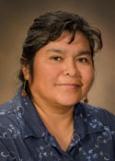 "Dr. Francine C. Gachupin is Associate Professor, Department of Family and Community Medicine, College of Medicine; Assistant Director, Cancer Disparities Institute, Arizona Cancer Center; and Assistant Director of the Native American Research and Training Center, all at the University of Arizona. Dr. Gachupin is a tribal member of the Pueblo of Jemez in New Mexico. She received her Doctor of Philosophy from the University of New Mexico and her Master of Public Health degree in Epidemiology from the University of Washington. She studies primarily chronic diseases and related behavioral risk factors. Much of her training has been at the National Institutes of Health and most of her work has occurred at four separate tribal based epidemiology centers – Portland Area, Aberdeen Area, Albuquerque Area and Navajo Area. She has worked with two tribal comprehensive cancer control programs in the northern plains and the pacific northwest."
"Dr. Francine C. Gachupin is Associate Professor, Department of Family and Community Medicine, College of Medicine; Assistant Director, Cancer Disparities Institute, Arizona Cancer Center; and Assistant Director of the Native American Research and Training Center, all at the University of Arizona. Dr. Gachupin is a tribal member of the Pueblo of Jemez in New Mexico. She received her Doctor of Philosophy from the University of New Mexico and her Master of Public Health degree in Epidemiology from the University of Washington. She studies primarily chronic diseases and related behavioral risk factors. Much of her training has been at the National Institutes of Health and most of her work has occurred at four separate tribal based epidemiology centers – Portland Area, Aberdeen Area, Albuquerque Area and Navajo Area. She has worked with two tribal comprehensive cancer control programs in the northern plains and the pacific northwest."
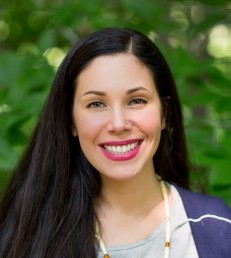 Dr. Blaire Topash-Caldwell (UNM PhD, 2020) recently joined the Newberry library’s staff as Mellon Public Humanities Fellow. In this role, Topash-Caldwell will contribute to a multiyear project to expand access to the Newberry’s extensive Indigenous Studies collection. Topash-Caldwell comes to the Newberry from the Pokagon Band of Potawatomi Nation’s Department of Language and Culture, where she served as the tribe’s first archivist....Topash-Caldwell, has worked to make relevant archival materials more accessible to Pokagon tribal members and collaborated with several institutions such as the National Archives in Chicago and the Eiteljorg Museum to make this possible. As part of this effort, she launched, managed, and developed content for a tribally-based content management system called Wiwkwébthëgen, expanding outreach and accessibility for the many tribal members who live beyond the Pokagon Band’s service area. Read more
Dr. Blaire Topash-Caldwell (UNM PhD, 2020) recently joined the Newberry library’s staff as Mellon Public Humanities Fellow. In this role, Topash-Caldwell will contribute to a multiyear project to expand access to the Newberry’s extensive Indigenous Studies collection. Topash-Caldwell comes to the Newberry from the Pokagon Band of Potawatomi Nation’s Department of Language and Culture, where she served as the tribe’s first archivist....Topash-Caldwell, has worked to make relevant archival materials more accessible to Pokagon tribal members and collaborated with several institutions such as the National Archives in Chicago and the Eiteljorg Museum to make this possible. As part of this effort, she launched, managed, and developed content for a tribally-based content management system called Wiwkwébthëgen, expanding outreach and accessibility for the many tribal members who live beyond the Pokagon Band’s service area. Read more
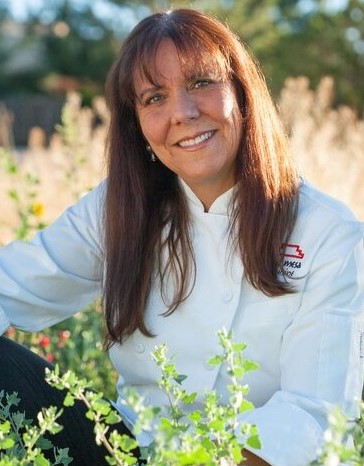 Dr. Lois Ellen Frank (UNM PhD, 2011) is a Santa Fe–based chef and culinary anthropologist whose book, Foods of the Southwest Indian Nations, won a James Beard Award. In a recent article for History, History on a Plate: How Native American Diets Shifted After European Colonization, she discusses the significant changes in native diets over time that have had health and cultural impacts on native communities. Read more
Dr. Lois Ellen Frank (UNM PhD, 2011) is a Santa Fe–based chef and culinary anthropologist whose book, Foods of the Southwest Indian Nations, won a James Beard Award. In a recent article for History, History on a Plate: How Native American Diets Shifted After European Colonization, she discusses the significant changes in native diets over time that have had health and cultural impacts on native communities. Read more
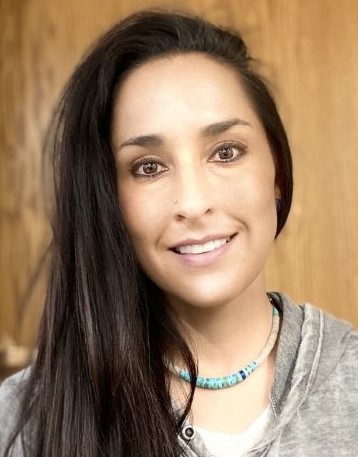 Jacque Kocer, UNM Archaeology doctoral student, was awarded the first Bertha Parker Cody Award for Native American Women by the Society for American Archaeology in 2021. The award will help fund completion of Jacque's dissertation examining how Gallina potters learned and shared knowledge and technology in the past. Funding for the award comes from the Autry Museum of the American West. She also was recently awarded a 2021-22 American Fellowship by The American Association of University Women (AAUW). After graduating, Kocer plans to teach Archaeology at a tribal college and promote the presence of Native American women in academia and cultural resource centers. She has also incorporated The Gallina Research Institute for Indigenous Technology (GRIIT), a nonprofit for Native American youth and college students. Indigenous-managed archaeological research and training program, GRIIT, promotes Indigenous sovereignty over cultural and natural resources while preserving New Mexico’s vast heritage. Read more
Jacque Kocer, UNM Archaeology doctoral student, was awarded the first Bertha Parker Cody Award for Native American Women by the Society for American Archaeology in 2021. The award will help fund completion of Jacque's dissertation examining how Gallina potters learned and shared knowledge and technology in the past. Funding for the award comes from the Autry Museum of the American West. She also was recently awarded a 2021-22 American Fellowship by The American Association of University Women (AAUW). After graduating, Kocer plans to teach Archaeology at a tribal college and promote the presence of Native American women in academia and cultural resource centers. She has also incorporated The Gallina Research Institute for Indigenous Technology (GRIIT), a nonprofit for Native American youth and college students. Indigenous-managed archaeological research and training program, GRIIT, promotes Indigenous sovereignty over cultural and natural resources while preserving New Mexico’s vast heritage. Read more
UNM Native American Studies
"As an interdisciplinary academic department, NAS is committed to Indigenous academic scholarship and research excellence. NAS offers a Master of Arts, a Bachelor of Arts, an Accelerated Online Bachelor of Arts, and a minor degree at the University of New Mexico. Our goal is excellence in educating all students and the public about the Native experience of Indigenous peoples with significant attention given our complex history and intercultural heritage of New Mexico and the United States. Another goal is to create a department that collaborates with Native communities and engages students in Nation building."
Read more about the Native American Studies department, faculty, programs and events
UNM Native American Studies Hosts American Indian Heritage Month
Events
November 4-5, 2021 UNM Gallup Hosts 2021 Diversity Summit Diversity/Inclusion: Theory to Practice
November 5, 2021 2 pm MDT Dmitri Brown presents The Meaning of Science on the Pajarito Plateau: Connecting Anthropology, Atomic Physics, and Tewa Philosophy through the Metaphor of the House as part of the Fall Anthropology Colloquia Speaker Series (online)
November 12-18, 2021 National Museum of the American Indian’s Native Cinema Showcase (online)
November 12, 2021 7 pm and November 14 at 7 a.m., and streaming on the PBS video app New Mexico in Focus: Joy Harjo
November 17, 2021 2 pm SAR Scholar Colloquium: Tewa Pueblos at the Dawn of Atomic Modernity presented by Dmitri Brown, 2021 Lamon Fellow
November 18, 2021 5:30 pm SAR Virtual Artist Talk Followed by a Live Q&A: Brandon Adriano Ortiz-Concha, 2021 Rollin and Mary Ella King Native Artist Fellow
November 19, 2021 2 pm MST Dr. Matthew Schmader presents Worlds Forever Changed: The Vazquez de Coronado Expedition to the Rio Grande Valley, 1540-1542 as part of the Fall Anthropology Colloquia Speaker Series (online)
November 19-20,2021 Maxwell Museum Navajo Rug Auction Preview: Friday, November 19, 5-7 p.m., at the Maxwell Museum; Auction: Saturday, Nov. 20, at Prairie Star Restaurant, Santa Ana Pueblo; Viewing starts 11 a.m.; Bidding starts 1 p.m.
November 20, 2021 11-4 pm EST 26th Annual American Indian Heritage Celebration at the North Carolina Museum of History (online)
November 22, 2021 Native News Online Debuts “Indian Boarding School Discussions”
November 25, 2021 9 am Native Health Initiative Sixth Annual Gratitude Run North Domingo Baca Park, Albuquerque Register here
November 25, 2021 12 noon EST United American Indians of New England 52nd Annual National Day of Mourning, Cole's Hill, Plymouth, MA
UNM American Indian Student Services is hosting a series of events throughout the month
UNM Native American Studies is hosting a series of events throughout the month
The UNM HSC Office of Diversity, Equity and Inclusion is hosting a series of events throughout the month
The Indian Pueblo Cultural Center in Albuquerque hosts a series of ongoing events throughout the year, including dances, demonstrations, workshops and exhibits
The National Museum of the American Indian features Why We Serve: Native Americans in the United States Armed Forces (online exhibit)
The Maxwell Museum of Anthropology on the UNM Campus features Indigenous Women: Border Matters (ongoing) Read more
Visit the School for Advanced Research YouTube page to view lectures and events
Native America Calling Culture Connection: Turkeys LISTEN NOW
2021 White House Tribal Nations Summit
Dr. Dustin Martin presents Indigenous Running: Modern Opportunity Defined by Ancestral Endurance
Dr. Joseph Aguilar presents Indigenizing the Academies
Dr. Jonathan Dombrosky presents Fishing for Foodways
The Maxwell Museum of Anthropology Virtual Exhibit: People of the Southwest
Research
Smithsonian Institution National Museum of Natural History: What Chocolate-Drinking Jars Tell Indigenous Potters Now
Chaco and Chocolate: SAR Impacts with Dr. Patricia Crown
The House of the Cylinder Jars
The Pueblo Bonito Mounds: Formation History, Architectural Context and Representational Fields
Improving Identification for Missing and Murdered American Indians, Using Newly Created New Mexico Decedent Image Database
The Smith Family Totem Pole Repatriation (Tlowitsis Nation)
The Sound of Navajo Country: Music, Language and Diné Belonging
The Community at the Crossroads: Artiodactyl Exploitation and Socio-environmental Connectivity at Tijeras Pueblo (LA 581)
Contextualizing Ancestral Pueblo Turkey (Meleagris gallopavo spp.) Management
Personal Adornment and the Construction of Identity: A Global Archaeological Perspective
Architecture and the Organization of Labor at Tsegi Phase (AD 1250-1300) Cliff Dwellings, Navajo National Monument
Resource Risk and Stability in the Zooarchaeological Record: The Case of Pueblo Fishing in the Middle Rio Grande, New Mexico
Trade Relationships and Gene Flow at Pottery Mound, New Mexico
Color in the Ancestral Pueblo Southwest
Native American Oral History Program Interviews (UNM Center for Southwest Research)
Dr. Keith Basso: Collected Works (Including Wisdom Sits in Places and Portraits of "the Whiteman": Linguistic Play and Cultural Symbols Among the Western Apache)
American Indian Records in the National Archives
UNM Press: Publications featuring Native American authors and topics
Sobel Duncan Science for Health in Indigenous Populations Graduate Student Research Award (Applications Due 12/10/2021
School for Advanced Research: Native Artist Fellows
The Computational Genomics & Technology laboratory (CGaT) announces theSobel Duncan Science for Health in Indigenous Populations (SHIP) Graduate Student Award
Five Ways Native American Communities Honor Turkeys
News
Students First to Graduate with UNM Native American Studies Master's Degree
Native Americans Overcame Major Obstacles to Vote in 2020 Election
'Our Ancestors' Dreams Come True: Deb Haaland Becomes the Nation's Most Powerful Native American Leader
In Unanimous Ruling, SCOTUS Affirms Authority of Native American Tribal Governments and Police Forces
Biden declares October 11 Indigenous Peoples' Day
Navajo Students Describe Pandemic Struggles to Jill Biden
UNM Names the Only Indigenous Chair of Architecture Program in the U.S.
Woman Makes History as First Female Police Chief in Taos Pueblo
Water is Life. Sharing Navajo Nation with the World
Nalgene Water Fund Pledges Support to Combat Water Crisis on Navajo Nation
Buried History Coming to Light in New Mexico
In a New Mexico Park, the Buried Bodies of Native American Children are Evidence of Genocide
Human Rights Panel to Hear Navajo Uranium Contamination Case
‘Ignored for 70 years’: Human Rights Group to Investigate Uranium Contamination on Navajo Nation
California to Replace Toppled Junipero Serra Statue at Capitol with a Memorial to Native Tribes
How Navajo Nation Activist Allie Young is Helping to Protect her Community from COVID-19
Turning the Tide: Addressing Water Rights in Indigenous Communities
Joy Harjo Appointed to Third Term as US Poet Laureate-Launches Signature Project Living Nations, Living Words
FBI Using Navajo Language in Campaign Targeting Hate Crimes
Lobo Artists’ Work Featured on Google Homepage
Native American Artist Teaches Traditional Methods of Making Pueblo Pottery: Award-Winning Project Highlights Symbolism in Native American Pottery
IllumiNative's Crystal Echo Hawk on Why Hollywood Needs a Guide to Native American Representation
Albuquerque Artist Brings Figures to Life with a Deep Look into the Native Soul
Biden Proposes 20-year Ban on New Oil Drilling Near Native American site in New Mexico
Biden Signs Order to Address 'Crisis of Violence' Against Native Americans at White House Summit
The Jingle Dress Project Brings Healing through Indigenous Dance: 'We were trying to figure out how we could best help those people who are in need'
'Our Culture is Vast, Different and Beautiful': Indigenous Art Shines at New Tempe Event
Textile Artist Naiomi Glasses brings Gen Z Visibility to the Navajo Nation
U.S. to Remove "Squaw" from Hundreds of Federal Lands Place Names
Native American Confirmed as Head of National Park Service
New Mexico Pilots take part in Navajo Christmas Airlift
UNM School of Law leads 'Environmental Justice Bus Tour' to Pueblo of Laguna
A Native American Photographer is Taking Powerful Portraits of Members of Every Tribe Across the US
Returning the 'Three Sisters' – Corn, Beans and Squash – to Native American Farms Nourishes People, Land and Cultures
Organizations
UNM American Indian Student Services
Society of Native American Graduate Students
UNM Native American Budget and Policy Institute
Native American Leadership in Education (NALE) Cohort
Dream Lab COVID-19 Relief
American Indian Language Policy Research and Teacher Training Center
Association of Indigenous Anthropologists
Native American Heritage Association
American Indian Science and Engineering Society
